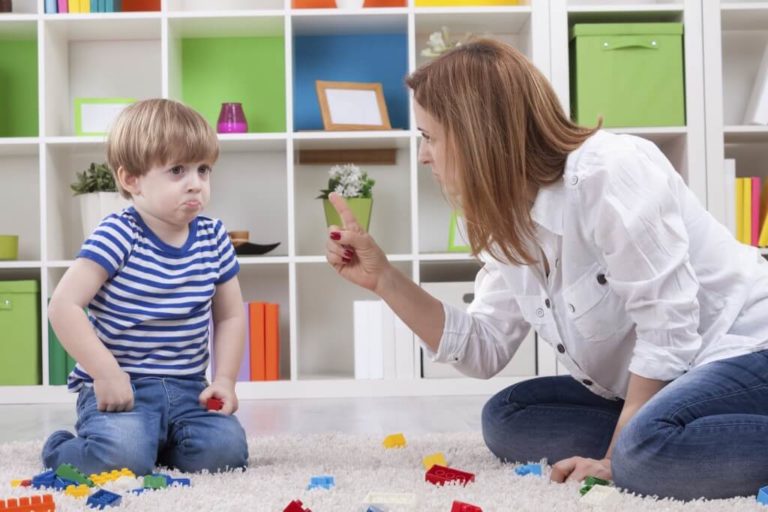8 Child Development Theories
Child development theories are focused on understanding and explaining how kids change throughout childhood. Some of these theories focus on the developmental milestones, or specific achievements children reach by a certain age. Others focus on aspects of child development, such as personality, cognition, and moral growth. Psychologists and development researchers have proposed several theories to…

Child development theories are focused on understanding and explaining how kids change throughout childhood. Some of these theories focus on the developmental milestones, or specific achievements children reach by a certain age. Others focus on aspects of child development, such as personality, cognition, and moral growth.
Psychologists and development researchers have proposed several theories to describe and explain the process and stages children go through as they develop. The following are just some of the major ways of thinking about the stages of child development.
The Purpose of Child Development Theories
Theories help provide a framework or lens through which we can better understand aspects of the development process.
Some of these theories attempt to explain almost every aspect of how people change and grow over the course of childhood. In other instances, these theories focus on a more narrow aspect of development.
How Our Understanding Has Changed
Throughout psychology history, many different child development theories have emerged to explain the changes occurring during the early part of life. In the modern study of child development, we simply take for granted that children are fundamentally different from adults.
Yet, for much of human history, kids were simply seen as smaller versions of their adult counterparts. It has only been relatively recently that the field of developmental psychology has helped us understand how children think is very different from how adults think.
Thanks to the work of some pioneering psychologists and other researchers, we now have a much deeper and richer understanding of how kids grow.
Some researchers have suggested that five of the most influential child development theories are maturationist, constructivist, behaviorist, psychoanalytic, and ecological.
Freud’s Psychosexual Child Development Theory
The theories proposed by Sigmund Freud stressed the importance of childhood events and experiences but almost exclusively focused on mental disorders rather than normal functioning.
According to Freud, children progress through a series of psychosexual stages. Each stage involves satisfying a libidinal desire and can later play a role in adult personality. If a child does not successfully complete a stage, Freud suggested that they would develop a fixation that would later influence adult personality and behavior.
During each stage, the libido’s energy becomes centered on a particular area of the body. The stages of Freud’s child development theory are:
- The oral stage
- The anal stage
- The phallic
- The latent stage
- The genital stages
During each stage, the pleasure-seeking energies of the id drive for satisfaction based on a particular erogenous zone. During the oral stage, for example, a child derives pleasure from activities that involve the mouth, such as sucking or chewing.
Conflicts associated with each stage must be successfully resolved to develop a healthy adult personality. Failing to resolve these conflicts can result in fixation at a particular point in development.
Erikson’s Psychosocial Development Theory
Erik Erikson was influenced by Freud’s work, but his own child development theories focused on the importance of social experiences in shaping a child’s psychological growth.
Like Freud’s theory, Erikson’s theory of psychosocial development lays out a series of stages people go through. Unlike Freud’s theory, Erickson’s theory covers development for the entire lifespan from birth until death. Freud believed that development was largely complete by age 5, while Erikson believed that people continue to develop and grow well into old age.
At each stage of development, people face a crisis they must master. Mastering the crisis leads to the development of a psychological virtue.
For example, the primary conflict during adolescence involves establishing a sense of personal identity. Success or failure in dealing with the conflicts at each stage can impact overall functioning. For example, failure to develop an identity during the adolescent stage results in role confusion.
Erikson’s theory begins at birth, as children start out in the trust versus mistrust stage. During this early stage of life, children need to receive consistent care so that they can learn to trust the people in the world around them. Development continues as children grow; at each stage, they face new conflicts and learn new skills that serve them well throughout life.
Behavioral Theories
Behavioral child development theories center on how children learn through their interactions with the environment. Early in the twentieth century, the school of thought known as behaviorism took hold in psychology. Behaviorists believed that learning and development result from associations, rewards, and punishments.
According to behaviorist John B. Watson, any behavior can be learned. Other theorists, including Ivan Pavlov and B.F. Skinner also contributed significantly to behaviorism, driving this school of thought to become a dominating force in psychology for many years.
Two important behavioral processes that influence development are classical conditioning and operant conditioning:
- Classical conditioning involves forming an association between a previously neutral stimulus and a stimulus that naturally and automatically produces a response. After an association has been formed, the once neutral stimulus now produces the response all on its own.
- Operant conditioning involves learning as a result of positive reinforcement, negative reinforcement, or punishment. The consequences of a behavior determine how likely it is for that behavior to occur again in the future.
When a behavior is reinforced, or strengthened, then it is more likely that the behavior will occur again in the future. When a behavior is punished or weakened, it is less likely to occur in the future.
Piaget’s Cognitive Development Theory
The cognitive theories of child development focus on how a child’s thought processes change over the course of childhood. One of the best-known cognitive theories is Piaget’s theory of cognitive development.
Theorist Jean Piaget suggested that children think differently than adults and proposed a stage theory of cognitive development. Another major contribution he made was noting that children play an active role in gaining knowledge of the world.
According to this theory, children can be thought of as “little scientists” who actively construct their knowledge and understanding of the world.
Early views of children tended to assume that the way kids think is similar to how adults think, but Piaget helped change this. He concluded that the way that children think is fundamentally different from that of adults.
His cognitive theory quickly became one of the most influential child development theories. His approach focuses on four distinct stages that kids go through as they progress from birth to adulthood.
The four stages in Piaget’s theory are:
- The sensorimotor stage takes place early in life between the ages of birth and two. During this time, a child learns about the world through their sensory perceptions and motor interactions. It is a time of astonishing cognitive change as children gain a great deal of knowledge about the world around them.
- The preoperational stage occurs between the ages of 2 and 6 and is also a time of rapid growth and development. At this stage, children still lack the ability to mentally manipulate information and struggle to see things from other people’s points of view. A great deal of language development takes place during this stage.
- The concrete operational stage, which takes place between ages 7 and 11, involves the emergence of more logical thought. Kids can think rationally about concrete events, although they struggle with abstract concepts.
- The formal operational stage, which lasts from roughly age 12 to adulthood, is marked by the emergence of hypothetical thought. Kids can reason about abstract concepts and make systematic plans about the future.
Concepts such as schemas, egocentrism, accommodation, and assimilation are central to Piaget’s theory. Each stage of development is marked by distinct changes in how children think about themselves, others, and the world.
Social Learning Theory
Social theories of child development focus on how parents, caregivers, peers, and other social influences impact development. Some focus on how early attachment influences development, while others center on how children learn by observing people around them.
Some examples of these social theories of child development include attachment, social learning, and sociocultural theories.
Psychologist Albert Bandura proposed what is known as social learning theory. According to this child development theory, children learn new behaviors from observing other people.
Unlike behaviorists, Bandura believed that external reinforcement was not the only way people learned new things. Instead, intrinsic motivations and rewards such as pride, satisfaction, and accomplishment could also lead to learning.
Bandura’s social learning theory combines elements of behavioral theories as well as cognitive theories while accounting for the powerful influence that social experiences have on how kids learn and grow.
Bandura believed that behavioral processes alone could not account for how kids learn. How, he wondered, could we explain learning that occurred without any direct association or reinforcement?
He noted that observation and modeling play a major part in the learning process. In his famous Bobo doll experiment, Bandura demonstrated that kids could learn aggression by watching the actions of an adult model.
Observational learning can involve directly observing another person, but it can also take place by listening to someone else explain how to do something or even reading about it in a book.
Attachment Theory
Psychologist John Bowlby proposed a child development theory focusing on the importance of early attachment with caregivers. This theory suggests that a child’s relationship with their parents or caregivers influences social and emotional development during childhood and that these early attachments continue to influence life.
Bowlby believed that children are born with an innate need to stay close to caregivers. This helps ensure safety and security and ensures that the caregivers are nearby and can respond to the child’s needs.
Mary Ainsworth studied how children reacted when left in a room without their parents. Her observations of how children responded when their parents left when they were gone, and when they returned led her to conclude that there were three major attachment styles. Later, other researchers added a fourth style of attachment to this framework.
- Secure attachment is characterized by the ability to form loving and secure relationships with other people.
- Anxious attachment is marked by worry, insecurity, and a fear of abandonment.
- Avoidant attachment is characterized by difficulty trusting others, lack of emotional availability, and a fear of intimacy.
- Disorganized attachment is marked by mixed behaviors that include neediness and avoidance.
Research suggests that these attachment styles are essential during childhood, but also impact behavior and relationships later in life.
Ecological Systems Theory
Psychologist Urie Bronfenbrenner developed an ecological systems theory that focused on understanding how complex systems of social relationships affect a child’s development. Instead of focusing on stages or immediate relationships in isolation, the theory looks at the many levels of influence, including family, peers, society, culture, and customs.
Bronfenbrenner suggested that children are influenced by various environments (known as ecological systems), that interact with each other in various ways.
This theory of child development suggests that five levels of influence have an impact on a child:
- Microsystem: This includes the child’s immediate environment and includes parents, siblings, friends, classmates, teachers, and other people whom children directly interact within their community.
- Mesosystem: This level includes the interaction of the different microsystems in a child’s life. Examples include connections between home and school, friends and family, and the larger community.
- Exosystem: This includes social structures that indirectly affect a child through their influences on different microsystems. For example, this might include parental work, neighborhoods, popular media, and the microsystems of peers.
- Macrosystem: This level includes the cultural and societal factors that can impact a child’s development. Factors such as ethnicity, socioeconomic status, and geographic location are a few examples.
- Chronosystem: This level encompasses the environmental changes that occur during a child’s life, including major life transitions and historical events.
The theory also notes that the relationships in these environments influence children but that children also influence the people they interact with.
Kohlberg’s Theory of Moral Development
Psychologist Lawrence Kohlberg proposed a theory of moral development, suggesting that people move through a series of six stages that can be split into three levels. These levels and stages are centered on how kids reason about moral problems.
Pre-Conventional Morality
At this level, moral reasoning involves obeying authority figures and looking after self-interests. It is divided into two stages:
- Stage 1: Obedience and punishment, in which kids try to obey authority and avoid punishment.
- Stage 2: Individualism and exchange, where kids begin to understand that others have differing needs.
Conventional Morality
This level involves making moral choices that are influenced by social roles and expectations. It is further divided into two stages:
- Stage 3: Good interpersonal relationships, which focuses on being seen as good and responsible by others.
- Stage 4: Maintaining social order, which which kids make moral decisions that are designed to fulfill social obligations.
Post-Conventional Morality
This level is the highest point of moral development, but not everyone makes it to this point. It focuses on making moral decisions that are based on individual and universal ethical standards. The two stages of this level are:
- Stage 5: Social contract and individual rights, where people consider laws and ideas that promote the greater good of society at large.
- Stage 6: Universal principles of ethics, which focus on concepts such as equality, justice, and fundamental human rights.
Applications for Child Development Theories
Some of the ways that child development theories are used today include:
- Guiding parenting practices
- Informing educational practices
- Advancing scientific research
- Informing public policy
Child development theories are widely used today to help parents, educators, and policymakers understand how children grow and learn. By providing a framework for understanding the stages of development that children go through, these theories help us to adapt our practices and policies to best support children’s needs.
Parents can use child development theories to understand their child’s behavior and needs better, adapting their parenting style to match their child’s developmental level. Meanwhile, educators can use these theories to create age-appropriate learning materials and curricula, ensuring their students receive the support they need to succeed.
Researchers also rely on child development theories to guide their studies and advance our understanding of how children learn and grow. Policymakers use these theories to shape public policy related to education, childcare, and child welfare, creating programs and initiatives that support children’s development and well-being.
Child development theories are crucial for anyone working with children. They provide a foundation for understanding how children develop and how we can best support their growth and success. By using these theories in our work, we can ensure that we provide children with the resources and support they need to thrive.
Key Points About Child Development Theories
Many different child development theories have emerged to explain how kids learn and grow over the course of childhood. Some of these theories attempt to be all-encompassing and explain many different aspects of the human experience, so they are often called “grand theories.” In other cases, child development theories attempt to explain a relatively narrow aspect of the developmental experience, which is why they are called “mini theories.”
In either case, each of these child development theories has helped add to our understanding of how children grow, think, learn, and change over the years from birth until adulthood.
References:
Cassidy J, Jones JD, Shaver PR. Contributions of attachment theory and research: a framework for future research, translation, and policy. Dev Psychopathol. 2013;25(4 Pt 2):1415-34. doi:10.1017/S0954579413000692
Keenan T, Evans S, Crowley K. An Introduction to Child Development. SAGE; 2016.
Piaget J, Cook MT. The Origins of Intelligence in Children. New York, NY: International University Press; 1952.
Saracho ON. Theories of child development and their impact on early childhood education and care. Early Childhood Educ J. 2023;51(1):15-30. doi:10.1007/s10643-021-01271-5





